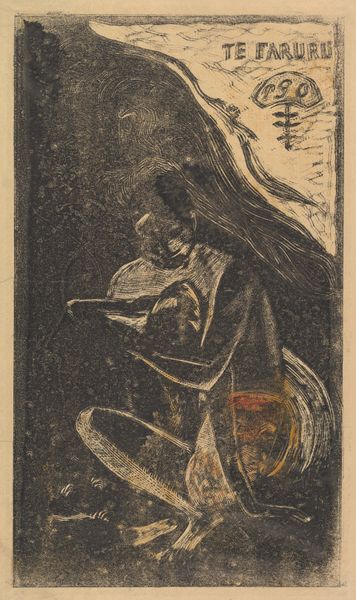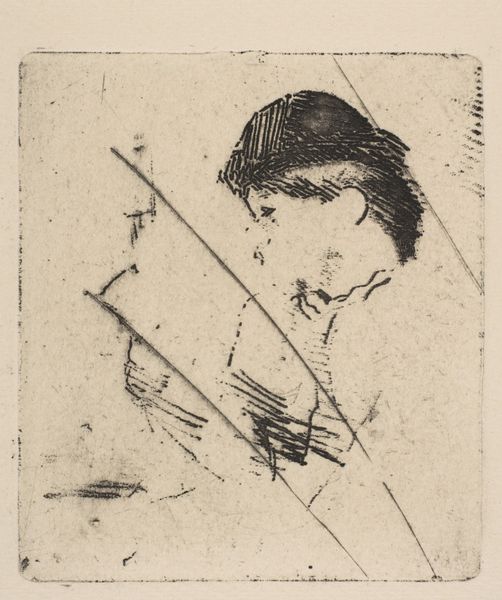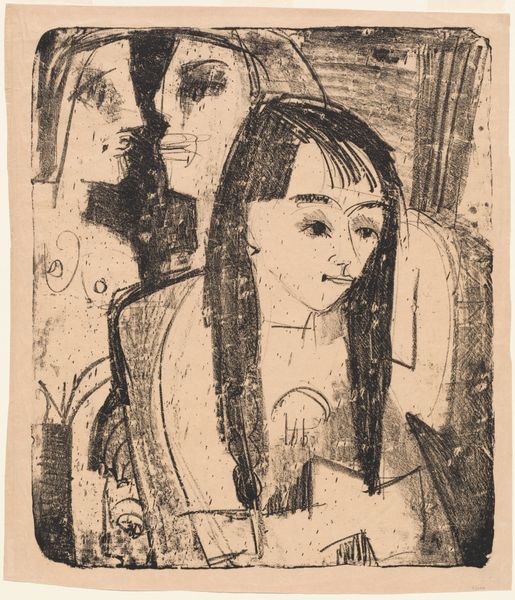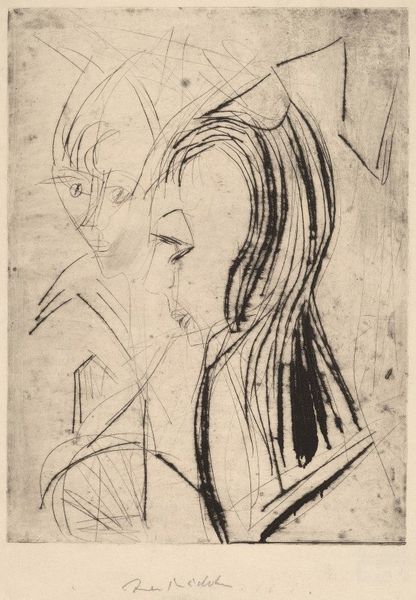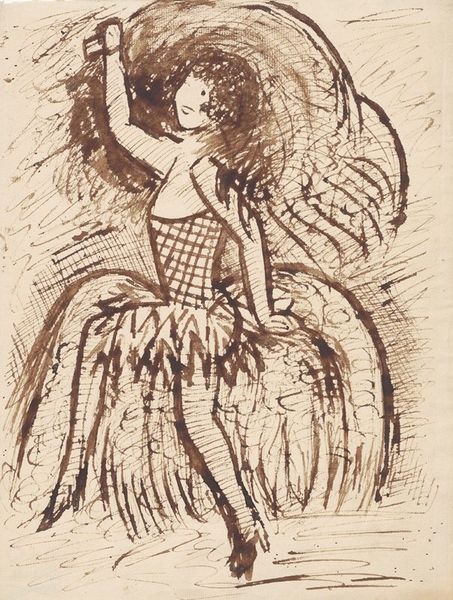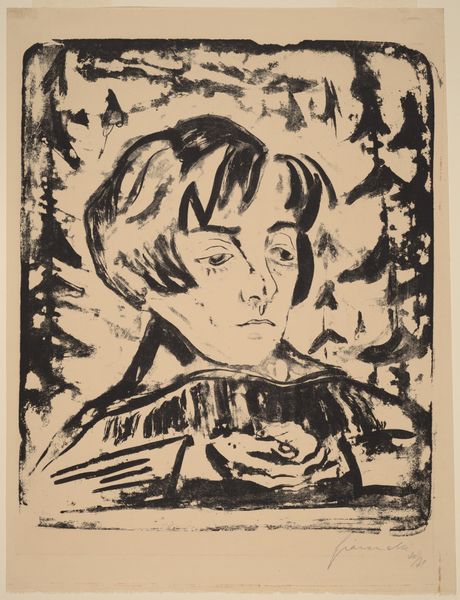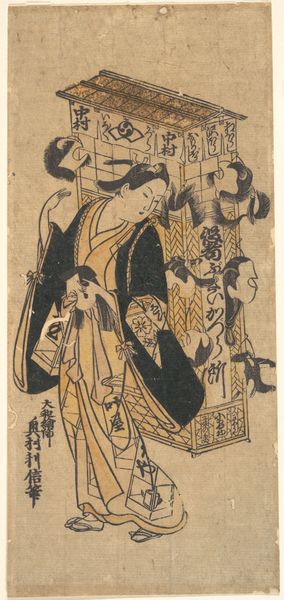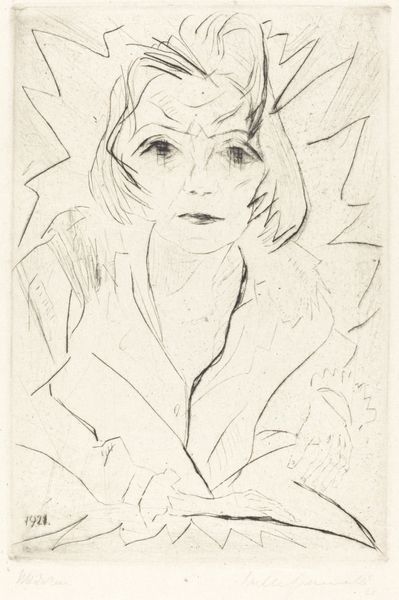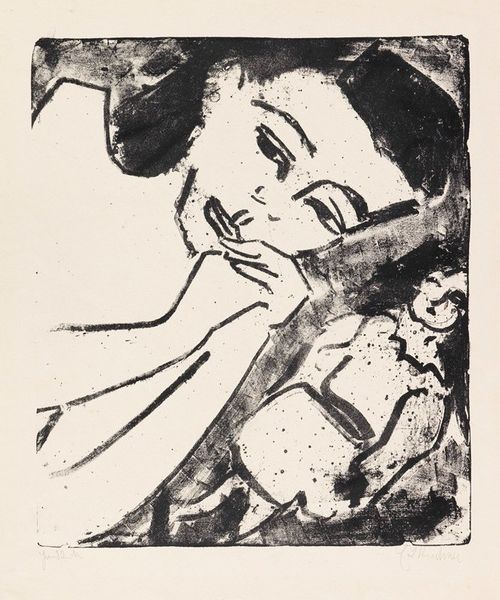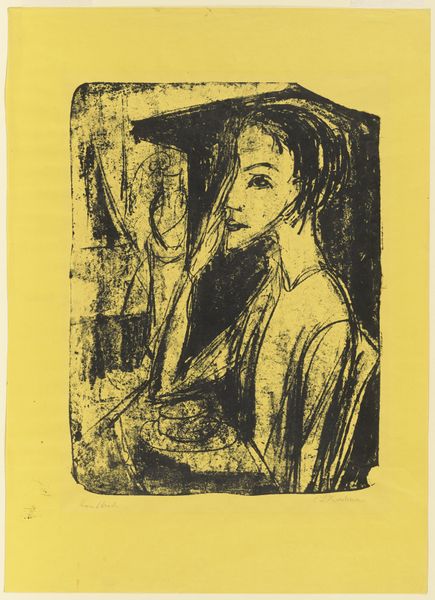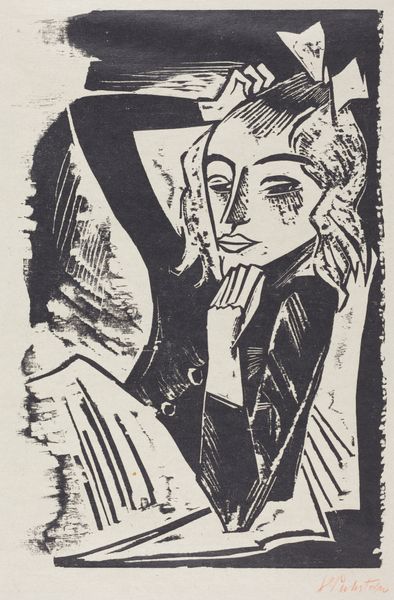
drawing, lithography, lithograph
#
portrait
#
drawing
#
lithography
#
lithograph
#
german-expressionism
#
figuration
#
expressionism
#
line
Copyright: Public Domain
Curator: Ah, "Junge mit Kartenspiel, Sohn Hardt" ("Boy with Cards, Son Hardt"), a lithograph by Ernst Ludwig Kirchner from 1915. A poignant glimpse into a fleeting moment. Editor: It strikes me as more than poignant; there’s an unsettling tension, a nervous energy radiating from the scratchy lines and the subject's intense focus on those cards. The stark contrast emphasizes the weight of his gaze. Curator: Absolutely, it’s that distinct Kirchner unease, isn't it? Like he's peering into the soul, not just observing a game. And there is an intimacy in the scene, too—a child so involved. The chaotic lines, swirling almost like feathered wings behind him, perhaps emphasize his fragility or innocence within a turbulent era. Editor: Fragility certainly resonates. Consider the historical context: 1915. Europe was being torn apart by war. For a young boy, the escape into a game of cards, as seemingly harmless as it is, could represent a coping mechanism against the horrors encroaching on childhood. This image feels less like a portrait and more like an embodiment of anxiety in the face of modernity. Curator: True. One might wonder if Kirchner, already grappling with his own demons during the war, saw something of himself in young Hardt’s absorbed state. Notice how he's depicted; almost fragmented, fitting into that sense of disconnection with pre-war life. There’s this echo of alienation that characterizes German Expressionism, and it touches upon the core of what it meant to feel lost in that time. Editor: And not to overlook the material reality of the print. Lithography, with its ability to capture nuances of tone and texture, perfectly mirrors the psychological complexity of the era. Kirchner uses line, not to describe form, but to convey mood. Curator: Indeed, the very act of pulling a print—multiplying the image—speaks to a collective experience of trauma and uncertainty. What an echo chamber! What seems on the surface to be just a young man holding cards in a drawing suddenly opens up into a vortex of socio-historical meaning. Editor: Exactly! It invites us to confront not just the beauty of art but its profound capacity to reflect, refract, and challenge our understanding of history and humanity. It is indeed beautiful and dark. Curator: Wonderfully said. Thank you for bringing that view, making it darker and all the richer for that! Editor: My pleasure. It's a privilege to look deeper, always.
Comments
No comments
Be the first to comment and join the conversation on the ultimate creative platform.
